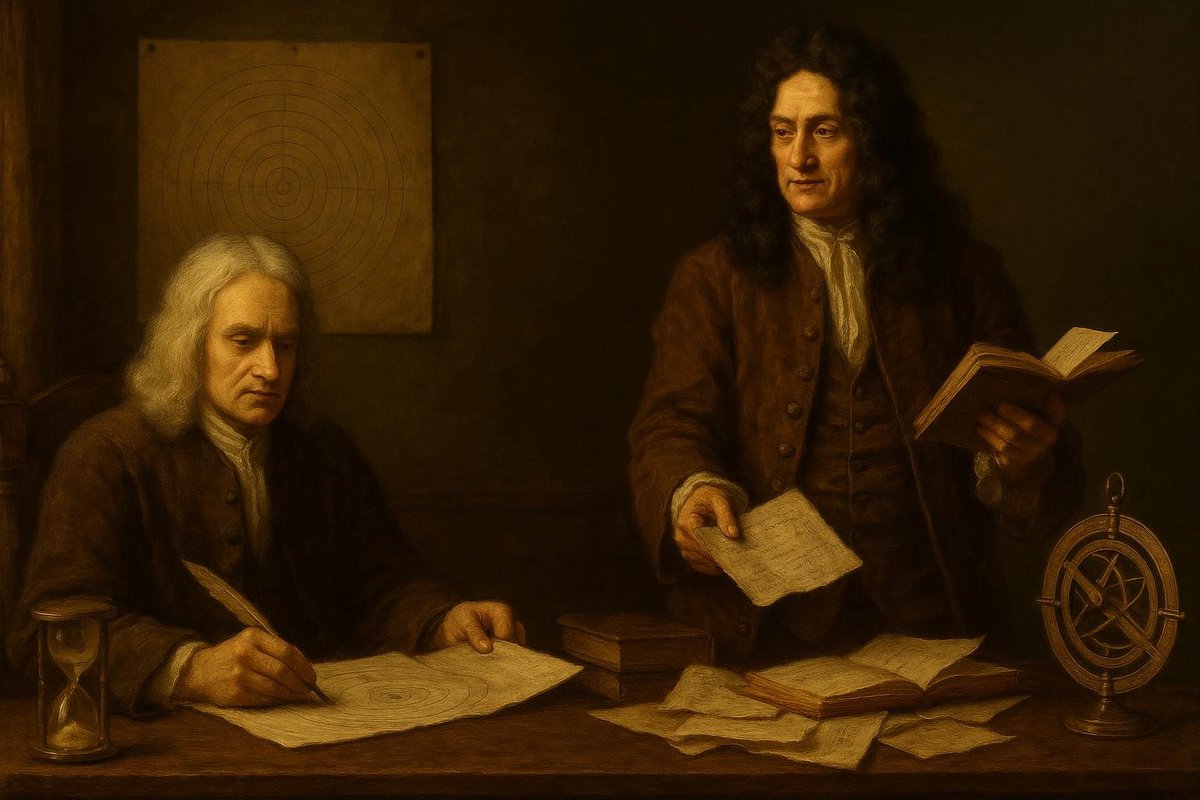
Problem Context: The World Waiting for Change
Imagine standing at the edge of a river, observing how the water flows smoothly yet relentlessly. How can we measure its speed, its volume, or its changing depths? This was the kind of natural phenomenon that puzzled scientists and mathematicians of the 17th century.
During this period, the world was brimming with questions that demanded explanations beyond the capabilities of existing mathematical tools. The scientific revolution had ignited a spark, challenging traditional views and inspiring thinkers to explore new territories.
- Renaissance thinkers had laid the groundwork with algebra and geometry, yet these tools were insufficient for dynamic systems.
- As astronomy and physics advanced, so did the need for a mathematical language that could describe change and motion.
- Interestingly, the lack of a comprehensive theory for continuous change was the missing piece that the intellectual world was so desperately seeking.
As time went on, the question wasn’t only how to measure change but who would rise to solve this monumental puzzle. The stage was set for an extraordinary leap forward.
Theoretical Breakthrough: Newton and Leibniz
In the late 17th century, Isaac Newton and Gottfried Wilhelm Leibniz independently laid the mathematical foundations that would evolve into modern calculus. Their work was not only groundbreaking but also marked by intense rivalry. Both men were driven by a personal passion for understanding the universe.
- Newton, an introspective and solitary figure, developed his ideas in the quiet of his home during the plague years.
- Leibniz, more extroverted, published his work and corresponded widely, contributing to the spread of calculus in Europe.
- Remarkably, each man’s approach was distinct yet led to similar conclusions, underscoring the concept’s universality.
No wonder their discoveries sparked debates over originality and precedence, yet their shared insight into infinitesimal calculus was undeniable.
Supporting Evidence: Proving the Unseen
As Newton and Leibniz’s theories began to gain traction, the scientific community demanded proof. How could one trust a method that relied on infinitesimals—quantities smaller than any measurable size?
- Newton applied his calculus to celestial mechanics, explaining planetary motion in a way that aligned with Kepler’s laws and observations.
- Leibniz’s notation and systematic approach made calculus accessible, eventually leading to its adoption across Europe.
- Both men used thought experiments to visualize concepts. Imagine stretching a line into infinity, each point representing an instant in time.
Of course, over time, these ideas faced scrutiny and refinement, yet the practical applications were so compelling that calculus became a cornerstone of modern science.
Modern Relevance: A Legacy Continues
Today, calculus is a fundamental tool in fields ranging from engineering to economics, embodying the principles of motion and change in our increasingly dynamic world.
- The principles Newton and Leibniz developed are now taught worldwide, forming the backbone of STEM education.
- Technological advancements, such as computer algorithms and AI, rely heavily on calculus to solve complex problems.
- As society progresses, the same passion and chance that fueled the creation of calculus inspire new generations of innovators.
Interestingly, the legacy of calculus is not just in its equations, but in the mindset of curiosity and courage it encourages, continuing to fuel human progress.
The journey of calculus is a testament to how personal passion and serendipity can collide to produce history-altering breakthroughs. As the world continues to advance, the spirit of inquiry that drove Newton and Leibniz serves as a reminder that the solutions to today’s challenges may well be brewing in the imagination of someone, somewhere.
Fuel Someone Else’s Curiosity
If this story of discovery has sparked your interest, share it with others who might find inspiration in it. Encourage them to explore how chance and curiosity can lead to groundbreaking ideas. Who knows, you might ignite the passion that fuels the next great discovery!

Leave a Reply